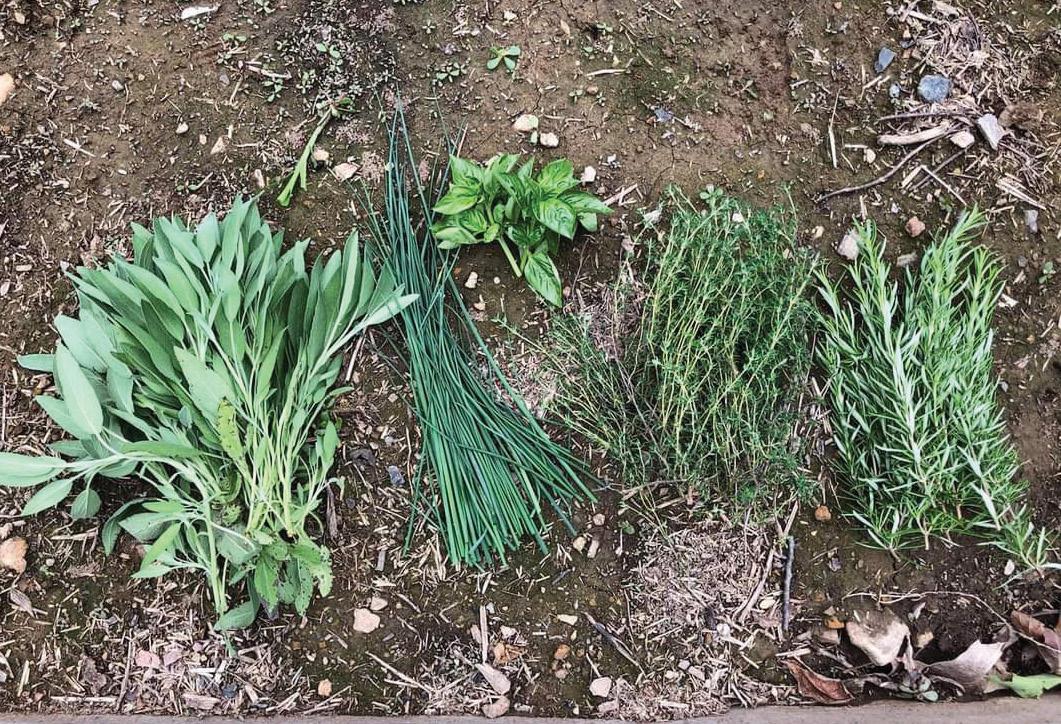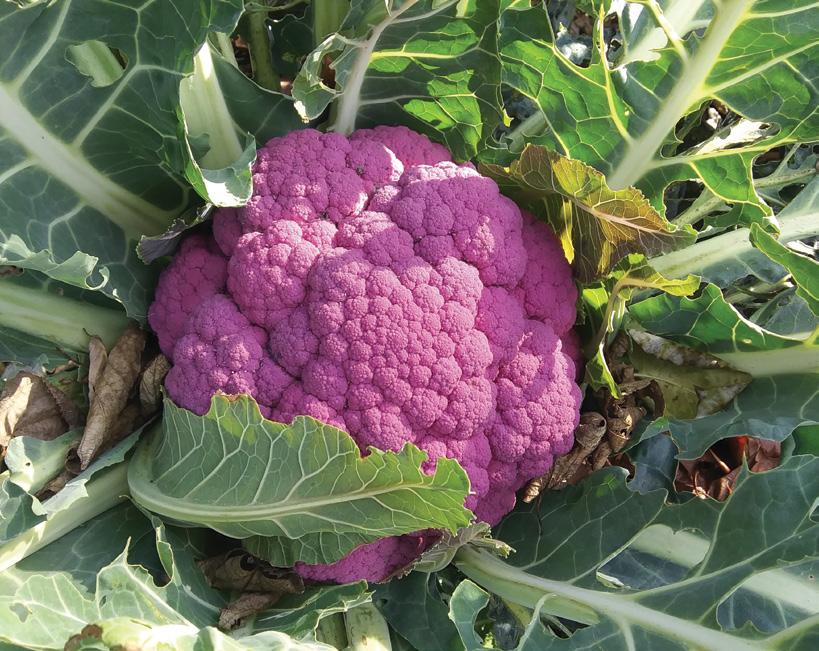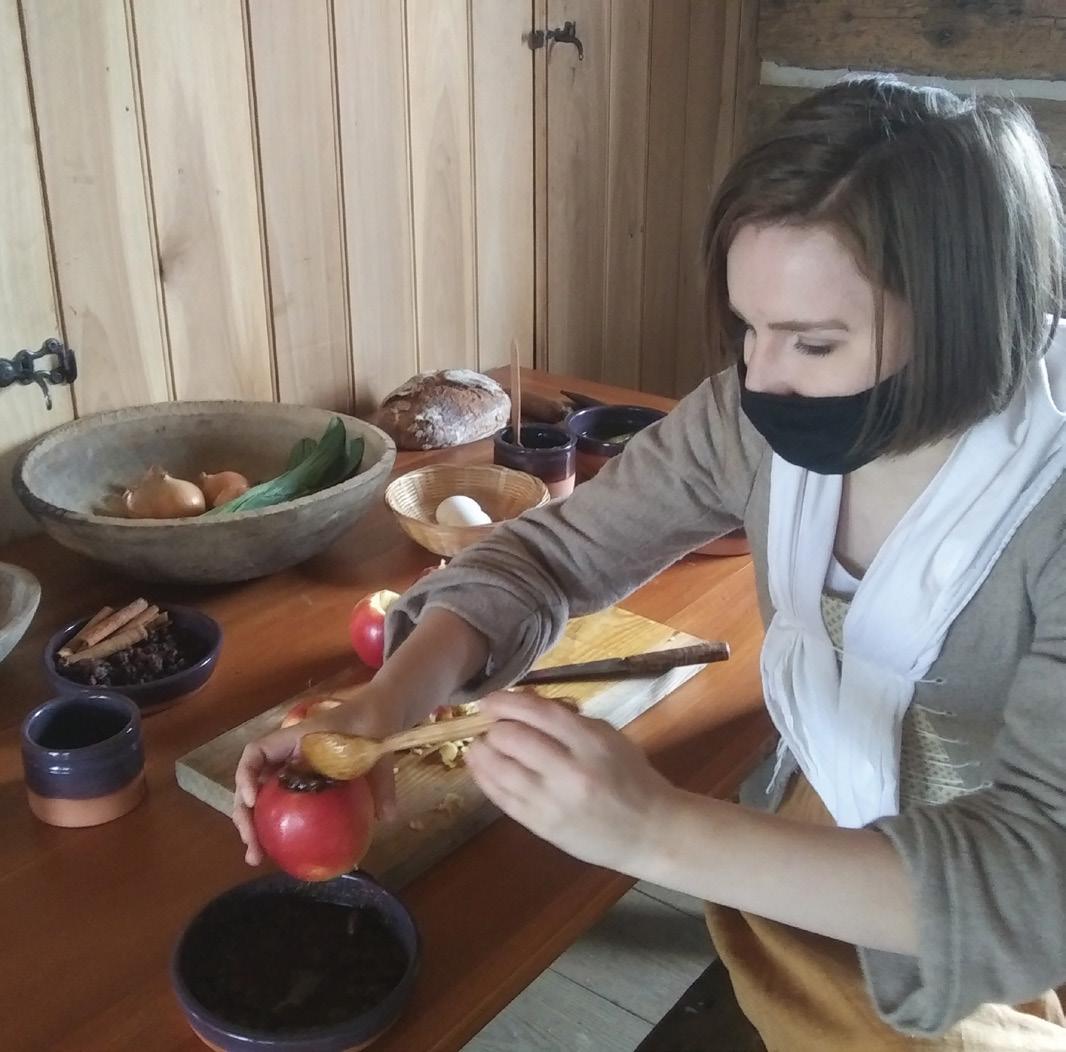
5 minute read
Conococheague Institute features crops grown in the 18th century
83
Conococheague Institute features crops grown in the 18th century
Advertisement
OUT AND ABOUT
written by
MATTHEW WEDD,
EXECUTIVE DIRECTOR CONOCOCHEAGUE INSTITUTE MERCERSBURG, PA.

A volunteer's harvest. Photo by Ellen Kinzer
It was a long winter, and the desire to be outside has never been greater. At the Conococheague Institute (CI), a 501(c)(3) nonprofit in Franklin County Pa., the season included a lot of exhibits and program development, but also a lot of snow shoveling.
People came throughout the coldest months to walk along our snowy nature trails in search of birds and to attend our colonial programs in the visitor center on weekends, but everyone is definitely looking forward to being outside more in warmer weather.
Spring is exciting for an outdoor living-history center like CI. As families search for areas to explore, our 30 acres provide incredible discoveries. Whether it’s a chance to dress in historic clothing or see a great blue heron in flight for the first time, there are always new experiences.
With spring and better weather, our entire range of educational programs – Colonial Life, Medicine and Surgery, Games, Women’s Roles, A Slave’s Story, Military Enlistment and more – are on tap. Learn more about the programs by contacting CI or going to cimlg.org.
84

Above: Saxon and Tati find the fruit of the wild. Below: Zach admires nature's growth. Photos by Brittany Wedd
Groups are booking now to use CI as part of their summer camps, and areas of the site are available to rent for parties. While it's still difficult to plan large events in advance, consider CI for your summer activities.
Back to the now, one of the best things about spring is that it brings nature to life.
Outside the frontier cabin, CI maintains a substantial colonial garden. This year, it will be planted with crops and produce that were grown in the 18th century. While root vegetables, such as turnips, parsnips and carrots, are the most common, there are plenty of greens, such as lettuce, chard and cabbage. We have plantings that can be pickled – cucumbers, beetroot and radishes – as well as some unexpected plants. Peppers will be grown on one end of the garden. While not a significant part of Anglo-American recipes, peppers were cultivated by slaves for their own meals as part of their cultural heritage and to disguise the taste of the poorer food cuts they received. (The untold story of these slaves is part of a new school program being offered in 2021).


85
The borders of the garden are planted extensively with kitchen and medicinal herbs, an everyday need for life on the frontier. Photo by Pat Todd
The borders of the garden are planted extensively with kitchen and medicinal herbs, an everyday need for life on the frontier. Smell the lavender for its relaxing powers or taste some mint to help relieve flatulence! We include many of the plants grown in our 18th-Century Medicine Program, but many of these remedies are still used today.
From seedlings to the table, at CI you not only learn about how things were grown, but take a hand in it. Join the interpretive staff in planting, hoeing, weeding and gathering water from the well. When the crops are ready, assist in the harvesting and watch as delicious meals are made.
A garden was an essential part of sustainable living and still is today. Whether you have a large garden to plant or just a windowsill for small greens and herbs, you should try some home growing. In addition to saving money by having fresh produce at home, the rewarding nature of growing something from seed to produce is indescribable.


Left: Fresh pickings from the CI garden. Photo by Matthew Wedd Above: Ellen Kinzer takes a break from weeding to smile at the camera. At Conococheague Institute, the garden produces more than the interpretative staff needs. Volunteers who help with the weeding and watering can also help with gathering and eating when the time comes. Photo by Bob Schwartz
86

Nature's colors are on display in this head of purple cauliflower and its green leaves. Photo by Matthew Wedd Rhubarb cut for pies. Photo by Pat Todd Rose of Sharon. Photo by Matthew Wedd


CI is lucky that people in the past planted apple trees, pear trees and grapevines. Plant a seed at home, and you might have the makings for jams, pies, cider and wine right in your back garden.
At CI, the garden produces far more than our interpretive staff could need, so we invite the community to share. If you help with weeding and watering, you also can help with gathering and eating when the time comes. We welcome you as part of our colonial community.
It will be a while before everything is ready to harvest, of course, so while we wait, try this simple colonial recipe for baked apples from “Hannah Glasse’s The Art of Cookery Made Plain and Simple,” first published in 1747. — Places


This colonial recipe for baked apples is from “Hannah Glasse’s The Art of Cookery Made Plain and Simple,” first published in 1747.
Hannah often leaves out the details, so here is a modern version:
BAKED APPLES
Preheat oven to 375 degrees. Wash apples and remove cores. Use a knife and spoon to scoop out centers. Don’t cut through the bottom of apples. Spoon brown sugar, cinnamon, cloves and lemon peel into the center hole of each apple. Put apples in a baking pan and pour ¾ cup hot water or red wine on the bottom of the pan. Bake for one hour. Apples are ready when a knife goes in smoothly.











